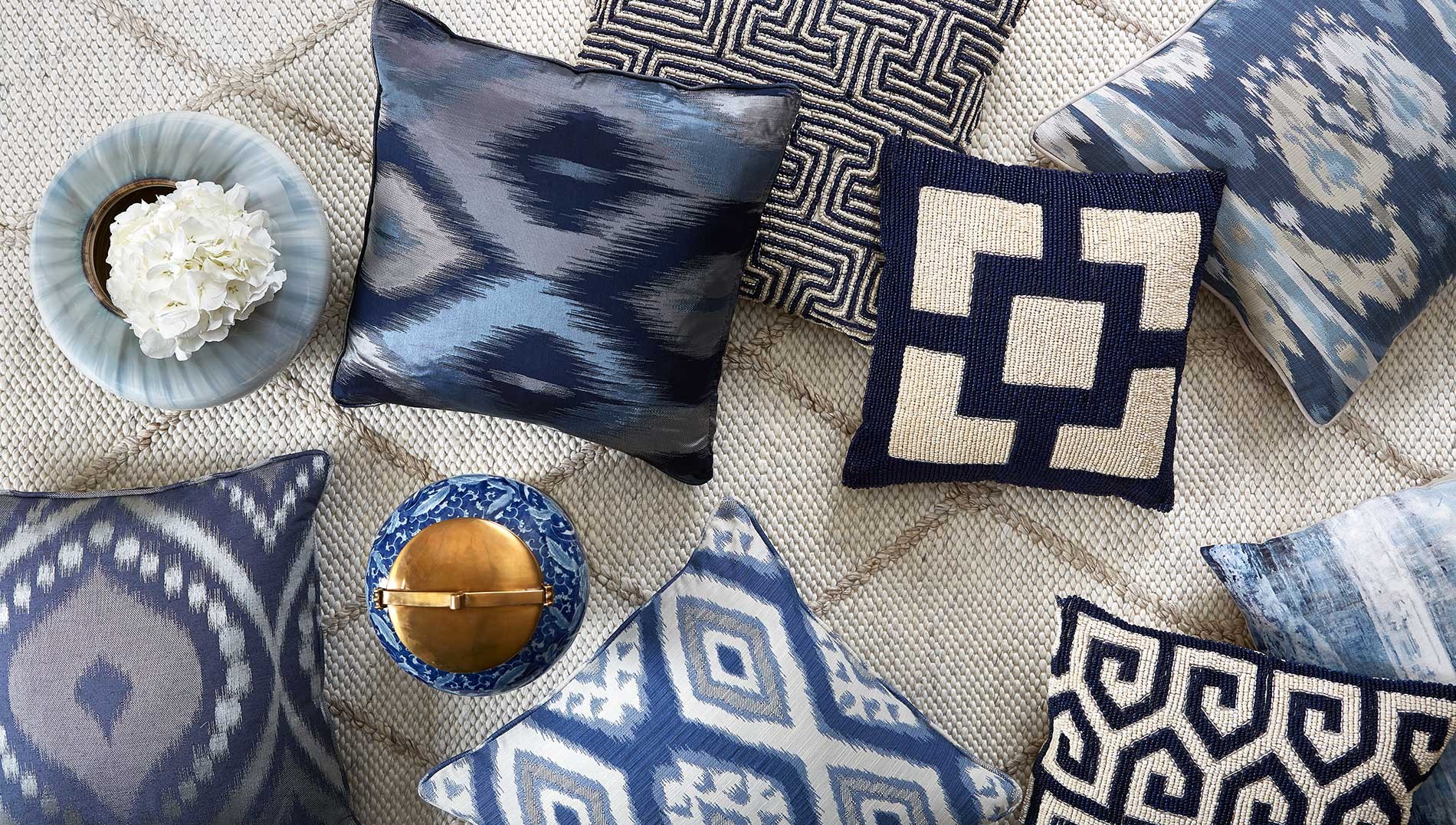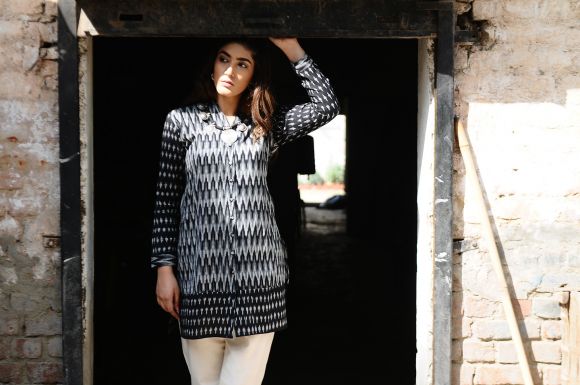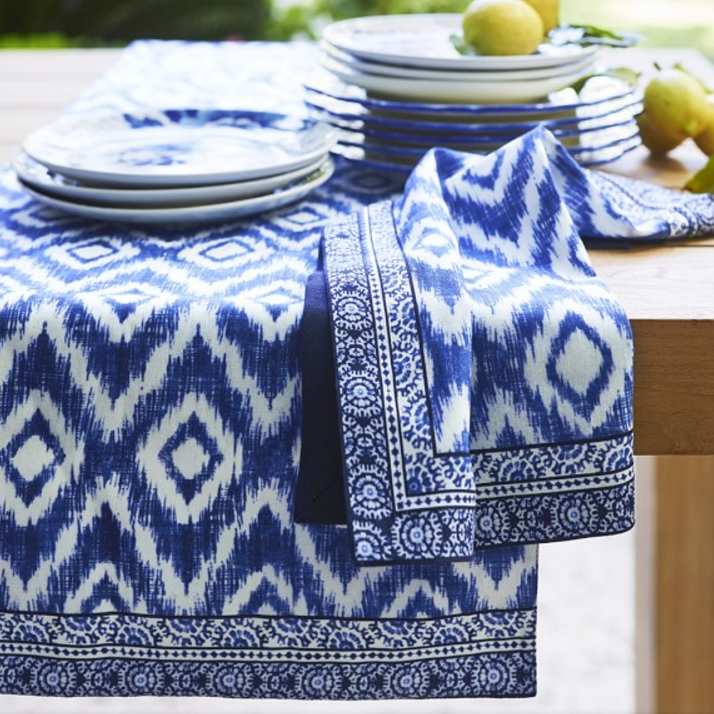Product detail: Ikat
Ancient yet modern. Ikat on trend. Photo: cntraveler.com
Ancient Yet Modern. Ikat Fabric On Trend
We've all heard of ikat, right? Probably because ikat is a near-universal weaving style common to many cultures over centuries. Nowadays, as it was then, versions of ikat can be found everywhere - like indigo it's amazingly trendy for something so ancient.
Historians, unable to identify the exact location of origin of the ikat technique believe it may have evolved independently in several locations across Central and Southeast Asia, to South America and the Middle East. Quite unbelievable really for a weaving technique that is so incredibly complex.
Though ikat is found across many different countries, the name we use today derives from the Indonesian word ‘mengikat’ which means to ‘to tie or bind'. Ikat uses a resist dyeing technique where loose threads are bound in a pattern so that the threads covered by the binding “resist” the dye, creating a design. The more binding done before weaving, the more complicated the pattern.
Hand dyed cotton ready for weaving. Photo: Pinterest
How Ikat Is Made
To create the ikat patterns, thread must first be spun into a yarn and grouped into bundles. All textile fibres may be used for ikat, although silk and cotton are the most common ones. The dye must then be made. Traditional dyes are used, and made from natural materials such as pomegranate, saffron persimmon, indigo, onion skins and turmeric. The yarns must be dyed one colour at a time, which is a very time-consuming process.
What this means is that the weaver has to figure out where on the loose threads the dye should (and shouldn't) go in order for it to form the proper pattern when it is woven on the loom.
It gets more complicated as you add more colours.
Some ikats are made by dyeing the warp threads (the fixed threads that are attached to the loom), some by dyeing the weft threads (the threads that are actually woven in and out of the warp threads), and some by dyeing both, a technique known as double ikat. It's like an aesthetic logic puzzle, and just thinking about it makes my head hurt...and probably yours too!
The incredibly detailed and intricate procedure referred to as ‘poetry of the loom’ yields a beautiful product with an intentional bleed that gives the fabric a pixelated appearance.
The complicated weaving process. Photo: Pinterest
Generational Master Crafts
The fabrics we carry from Uzbekistan, use traditional motifs and are inspired by centuries-old patterns and colours, but with an eye towards modern styles. Their maker, Rasuljon Mirzaahmedov is a ninth-generation ikat weaver whose exceptional skills were passed down from his father. Rasuljon is one of the few authentic ikat designers left in Central Asia. He works with 25 weavers – many of whom are women – as well as a similar number of dyers who are masters of the complex tying and colouring techniques that make ikat textiles unique.
Handmade via a 70-step process that involves tying, dyeing, and weaving, our silk ikat cushions are some of the most labour-intensive products we carry. In Uzbekistan, where our ikat cushions come from, the cloth has earned the Persian name "abr" or "clouds". In turn, weavers are called “abr-band" or “cloud-tiers”. A wonderfully apt name for such a beautiful fabric.
Classic Yet Modern - Art Of the Ages
Requiring such complex skills and investment of time, items using ikat fabric have historically been symbols of status, wealth, power and prestige. Western cultures have embraced ikats for centuries. The technique and textiles first came to Europe via Dutch traders in Southeast Asia, Spanish explorers in South America, and from travellers along the Silk Road, where the Uzbek ikat centres of Samarkand and Bukhara were important stops.
Even today this ancient, living art, is at once indigenous and international. Appearing on runways, in homes and art galleries this versatile textile art lends itself to both classic and modern design themes. Being a textile that has seen so many different interpretations across cultures, ikat is a truly global style that has lasted the test of time. Where are you going to show off some ikat loving?








